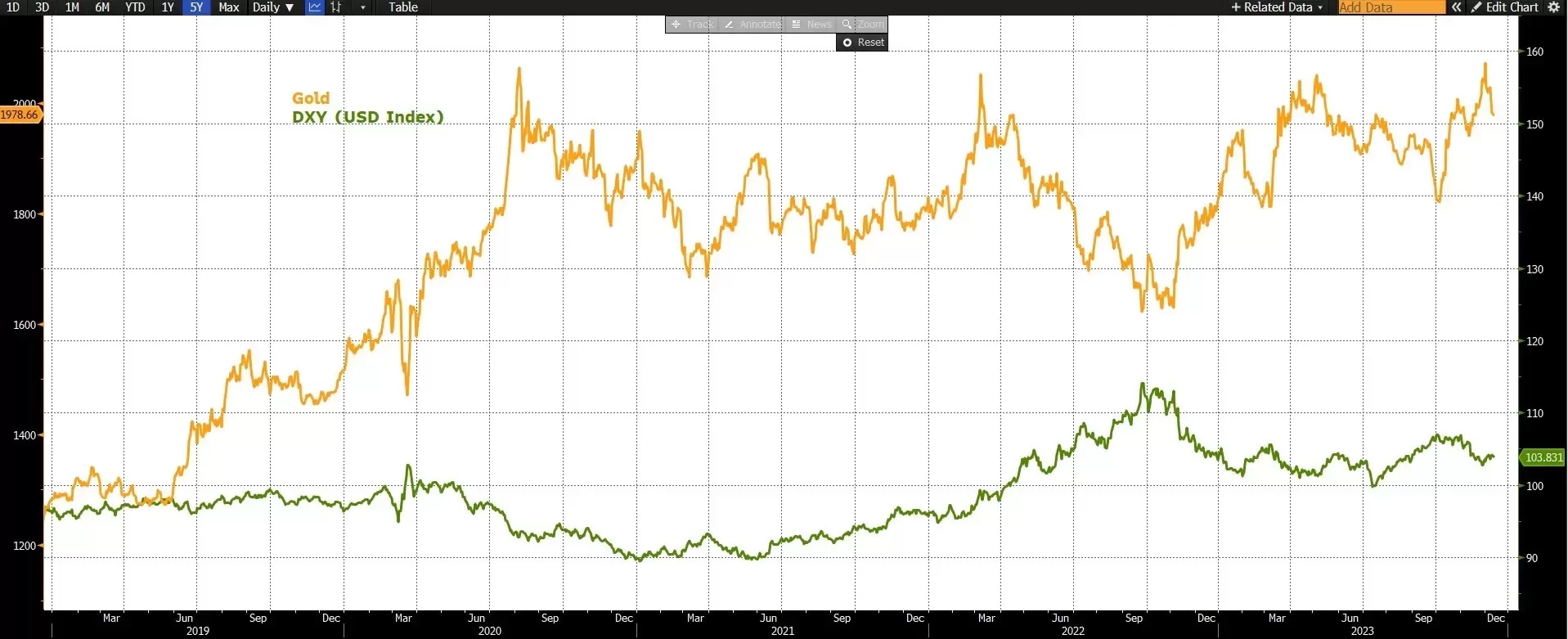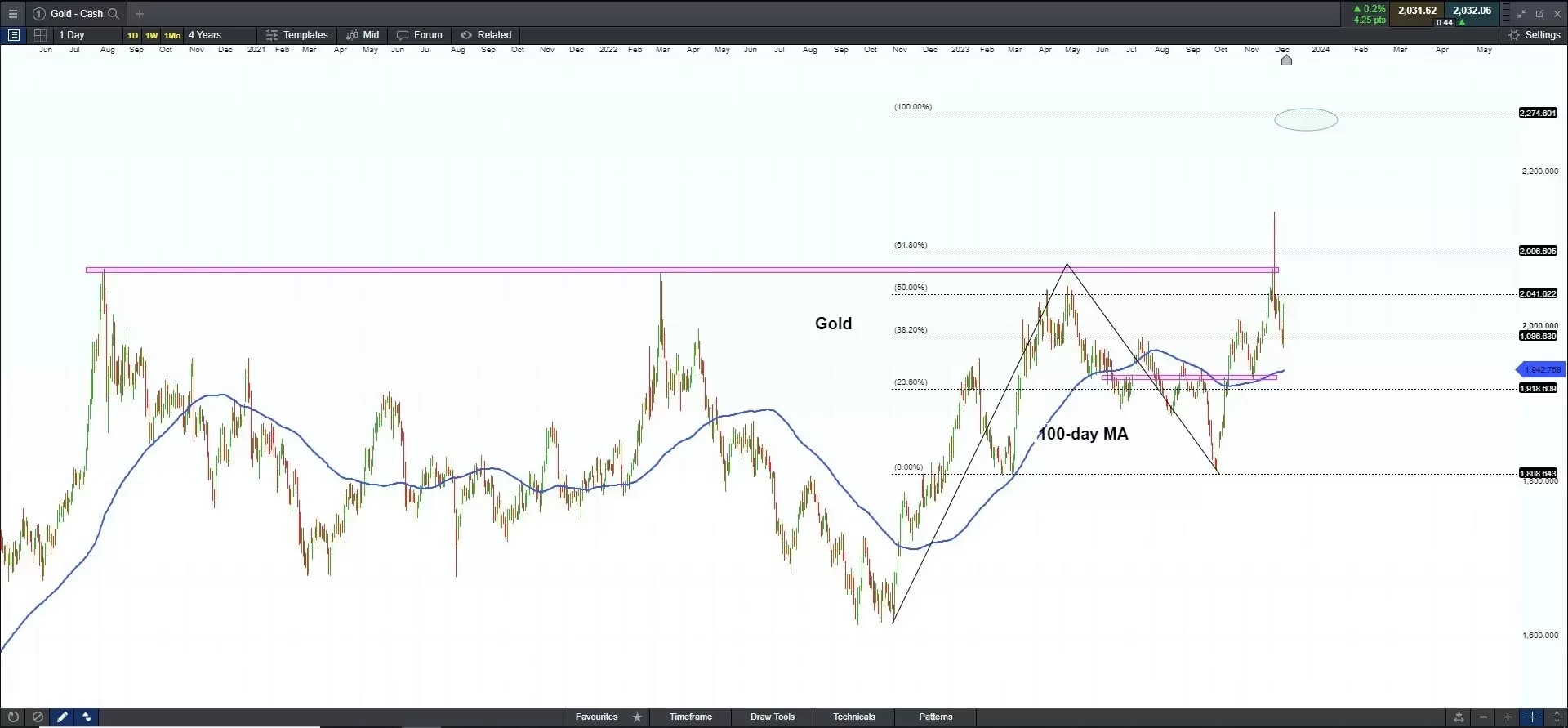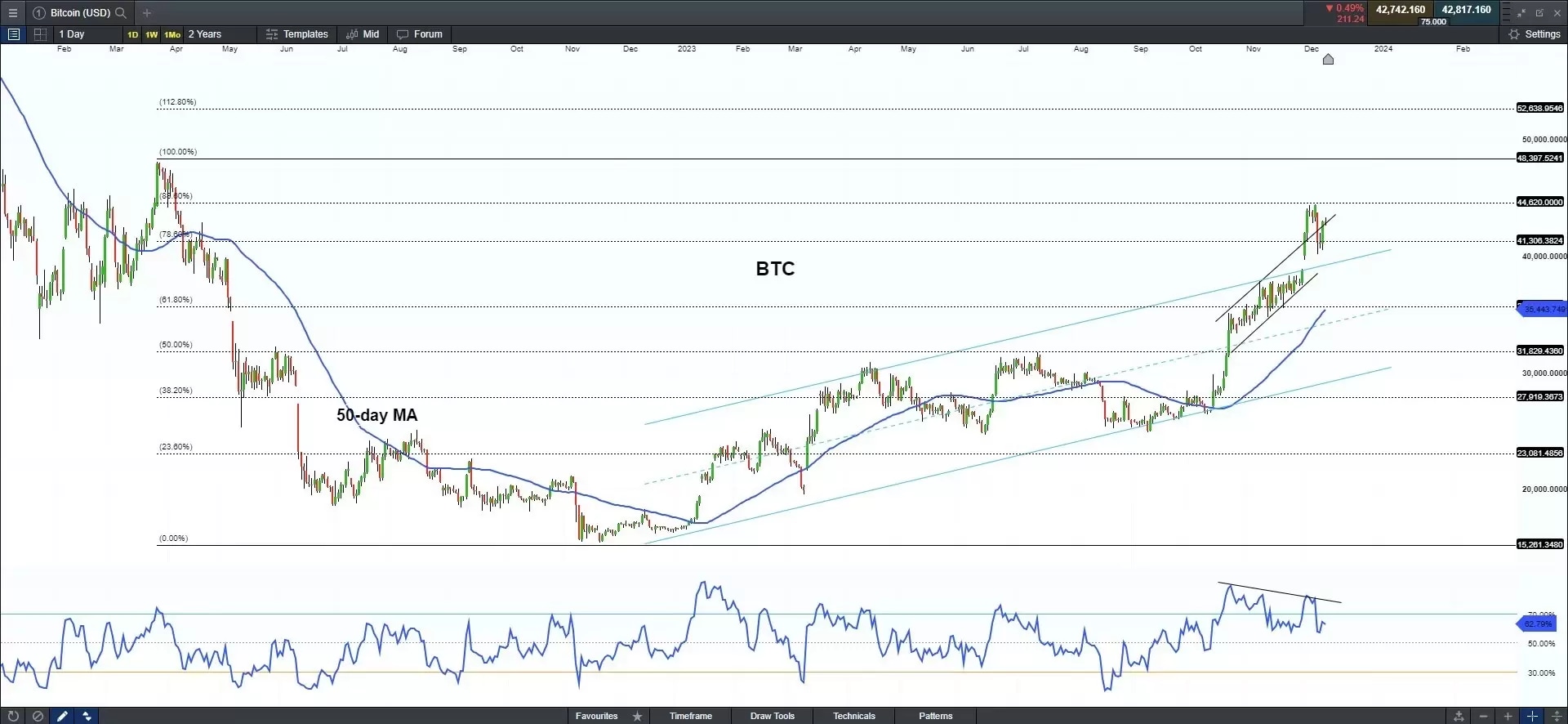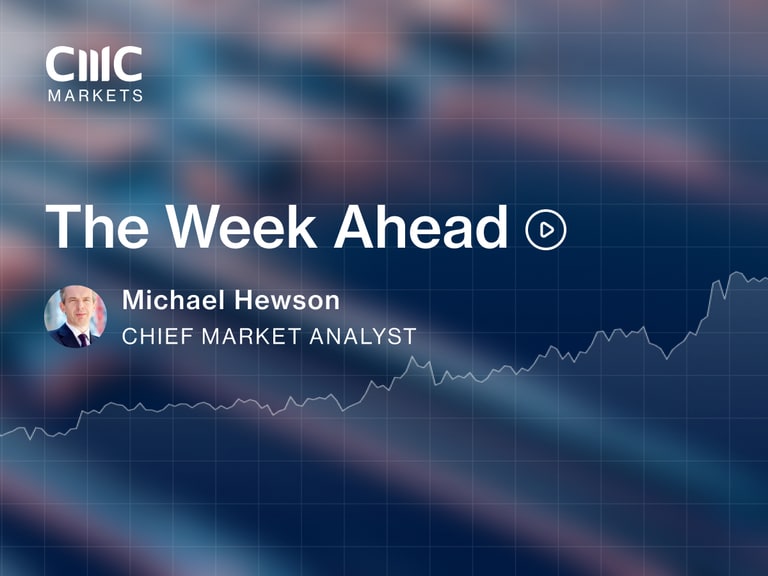Both gold and Bitcoin have experienced significant upsurges recently amid the improved macro-outlook. They are both sensitive to interest rates. The reason behind the scenes is the optimism towards improving liquidity conditions if the Fed does start cutting the interest rate next year. While rate cuts haven’tyet taken place, markets have already embarked on a bullish trend, not only in equities but also in assets sensitive to interest rates, such as gold and cryptocurrencies. However, could gold and Bitcoin continue their bullish momentum in the new year? While there are potential catalysts to continue supporting these assets’ uptrends, risk factors are also worth noting.
How far can gold go?
The price of gold recently hit all-time highs above US$2,000.There are several factorswhich influencethe price.
The primary influencer of gold price lies in the trajectory of the US dollar (USD), given the nearly perfect negative correlation between gold and the USD. When the value of the U.S. dollar strengthens, it takes fewer dollars to buy an ounce of gold, and vice versa. Also, a strengthened US dollar makes it more expensive for other currencies to buy gold, hence reducing the demand.

Another influencing factor is interest rates. An increase in the Fed's interest rate tends to bolster the USD, putting pressure on gold. Higher interest rates result in increased costs for gold storage and transaction fees, making gold less appealing compared to holding cash, which could yield higher returns. However, if the Fed decides to cut rates, gold may benefit. The timing of cuts is very much open for debate.
A third factor shaping the gold market is the possibility of an economic slowdown in 2024. High inflation and rising unemployment rates could lead to stagflation or even a mild recession. In such scenarios, gold often outperforms as a safe-haven asset. Precious metals are viewed as a hedge against inflation and a means to diversify risks.Nevertheless, gold prices experienced downturns amidst crisis shocks, as they were utilized as a hedge against losses in other assets.
Also, gold may face near-term headwinds as the interest rate remains high in a “soft-landing” economic print. While inflation remains above a 2% target level and stock markets are heading to new highs, gold could continue to be under pressure. But gold could enter another strong bullish trend once the previous high is broken through, which is a textbook rule from a technical perspective.

Volatility may be ahead for Bitcoin
Bitcoin has experienced asurge of approximately 160% this year, defying negative news surrounding FTX and Binance. The optimism surrounding spot ETFs has been a significant driver of its upward trend since mid-June, coupled with an improved liquidity condition supporting risk sentiment.
Looking ahead to 2024, two potential catalysts could further Bitcoin's upward trajectory. Firstly, Bitcoin ETF applications from major players such as BlackRock and Grayscale are currently in technical discussions with the SEC. The approval timeline could be between 6 January and 10 January.
Fidelity, a prominent fund manager, has already listed its Spot Bitcoin ETF on the Depository Trust and Clearing Corporation, suggesting that SEC approval might be imminent. Fidelity has also applied for a spot in Ethereum ETF.
The approval of a spot ETF could pave the way for banks to invest in cryptocurrencies without holding the physical assets, offering retail investors access to a regulated crypto investment house. Institutional investors, including fund managers, could include the ETF in their portfolios. Entities securing Bitcoin ETF approval would also need to hold physical Bitcoins to back up their cash products, potentially leading to a substantial cash inflow into the crypto world.
The second significant factor is the upcoming Bitcoin Halving event, which occurs roughly every four years or after every 210,000 blocks are mined in the Bitcoin blockchain.
During this event, the reward for miners is halved, aiming to control the supply of new bitcoins entering circulation. The last two halvings occurred in July 2016 and May 2020, suggesting a possible halving in April 2024. Historical trends show that Bitcoin tends to rally during the pre-halving phase as traders buy into the markets in anticipation. This is typically followed by a dip when the halving occurs and then a subsequent surge to a new high. Considering Bitcoin's previous high is just under US$70,000, another surge could potentially push past this high.

However, the near-term outlook raises some concerns, as indicated by the chart showing a potential bearish divergence. This could contribute to a further pullback in Bitcoin's value. In November, Bitcoin topped $44,000 but encountered technical resistance, resulting in a retreat to around $43,000.
In conclusion, both gold and Bitcoin could ride macroeconomic movements in 2024. Gold can offer a more stable option compared to Bitcoin which can be considerably more volatile as an asset. Because of this volatility, Bitcoin could bring both substantial gainsor losses. Whether you're a trader or investor, it's crucial to carefully evaluate your own circumstances and risk tolerance when making investment decisions.
Disclaimer: CMC Markets is an execution-only service provider. The material (whether or not it states any opinions) is for general information purposes only, and does not take into account your personal circumstances or objectives. Nothing in this material is (or should be considered to be) financial, investment or other advice on which reliance should be placed. No opinion given in the material constitutes a recommendation by CMC Markets or the author that any particular investment, security, transaction or investment strategy is suitable for any specific person. The material has not been prepared in accordance with legal requirements designed to promote the independence of investment research. Although we are not specifically prevented from dealing before providing this material, we do not seek to take advantage of the material prior to its dissemination.





